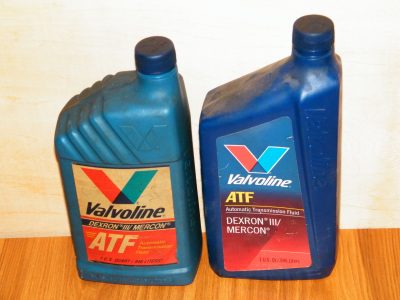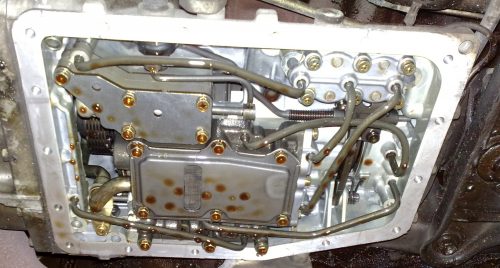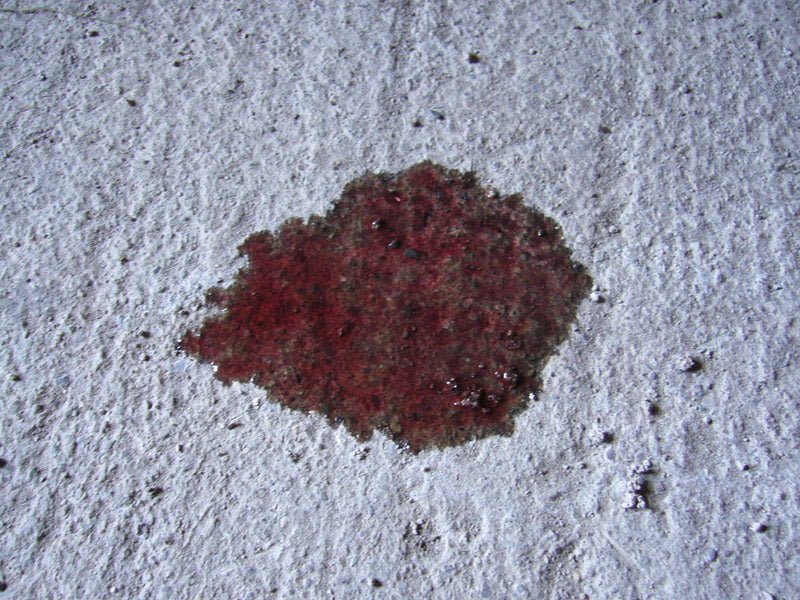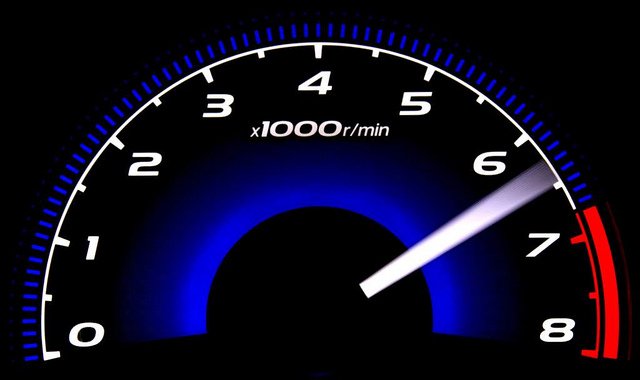 Adding Automatic Transmissions don’t usually require fluid additions except during a transmission fluid change. Even in a new car you may notice your engine oil level slowly dropping in between oil changes. If the level is dropping quickly it could be an indication that something is wrong with your motor, but in most cases losing some oil in between oil changes is normal. Even when everything is working properly it is possible for oil to seep past the valve seals or past the piston rings when your engine is cold causing it to slowly burn.
Adding Automatic Transmissions don’t usually require fluid additions except during a transmission fluid change. Even in a new car you may notice your engine oil level slowly dropping in between oil changes. If the level is dropping quickly it could be an indication that something is wrong with your motor, but in most cases losing some oil in between oil changes is normal. Even when everything is working properly it is possible for oil to seep past the valve seals or past the piston rings when your engine is cold causing it to slowly burn.
Your transmission, on the other hand, doesn’t have any reason for fluid to seep out as it is a closed system. The only penetrations into your transmission should be the input and output shaft and those should be sealed. This means that checking your transmission fluid level is something you don’t need to do as often as checking your engine oil. Unless you suspect you have a low transmission fluid level, you are probably safe checking it once per month. In most cases, you can check your automatic transmission fluid level using the dipstick. You need to do this while your engine is running and it’s usually easiest to do right after you start the engine cold.
What Kind of Transmission Fluid Do I Need?
Whether you’re wondering what kind of automatic transmission fluid to use because you’ve discovered a low fluid level or its time for a fluid change, you need to make sure you use the proper type. Even if you change your transmission fluid, you never will be able to drain all of the fluid from your system so it is important to use the same kind of fluid. It is also important to use the correct type of automatic transmission fluid because different fluids have very different properties. The wrong fluid can cause irregular pressures, clogs, precipitation or corrosion which can all drastically shorten the life of your transmission. For a quick read on different types of automatic transmission fluids and their properties, check out this article with an explanation of automatic transmission fluid.
 Automatic transmission fluid needs to be matched to the transmission. The correct fluid for your transmission will include a few things. First it will have the correct viscosity to create the appropriate line pressure to cause shifts to happen. Also, it will have corrosion inhibitors for the types of metals that are inside your transmission. Different transmissions have different components that require different chemicals to inhibit corrosion and keep wear products down. Next, the transmission fluid has to have the appropriate friction modifiers to cause the correct engagement of the bands and clutches. Depending on the materials the bands and clutches are made from, and the working pressure of the transmission, different friction modifiers are required to make sure friction surfaces grab tightly without slipping or chattering.
Automatic transmission fluid needs to be matched to the transmission. The correct fluid for your transmission will include a few things. First it will have the correct viscosity to create the appropriate line pressure to cause shifts to happen. Also, it will have corrosion inhibitors for the types of metals that are inside your transmission. Different transmissions have different components that require different chemicals to inhibit corrosion and keep wear products down. Next, the transmission fluid has to have the appropriate friction modifiers to cause the correct engagement of the bands and clutches. Depending on the materials the bands and clutches are made from, and the working pressure of the transmission, different friction modifiers are required to make sure friction surfaces grab tightly without slipping or chattering.
There are two main ways you can figure out which type of transmission fluid to use. First you can check your vehicle’s owner’s manual. It should indicate which type of fluid your transmission requires, how often it should be changed and even the amount of fluid you need to perform a transmission fluid change. If your vehicle’s owner’s manual is outdated or missing you can also head to your local auto parts store. Most major manufacturers of automatic transmission fluid list on the bottle what types of vehicles that particular fluid should be used in. This method should be used as a backup to your owner’s manual but can be helpful.
If you are adding automatic transmission fluid due to a low fluid level then you should also consider adding BlueDevil Transmission Sealer to your transmission fluid. As we discussed earlier, your automatic transmission fluid level should not change during normal use so if it is low it is an indication that you have a leak. BlueDevil Transmission Sealer will restore the seals in your transmission to stop the leak without changing the characteristics of your transmission fluid.
For more information on BlueDevil Transmission Sealer, check out our information page here: Transmission Sealer
You can also pick up BlueDevil Transmission Sealer at one of our partnering local auto parts stores like:
- AutoZone
- Advance Auto Parts
- Bennett Auto Supply
- CarQuest Auto parts
- NAPA Auto Parts
- O’Reilly Auto Parts
- Pep Boys
- Fast Track
- Bumper to Bumper Auto Parts Specialists
- S&E Quick Lube Distributer
- DYK Automotive
Pictures provided by:
automatic_transmission_fluid.jpg – By Andshel – Licensed By Creative Commons Via Wikimedia – Original Link
automatic_transmission.jpg – By Hoikka – Licensed By Creative Commons Via Wikimedia – Original Link
BlueDevil Products can be found on Amazon.com or at AutoZone, Advance Auto Parts, O’Reilly Auto Parts, NAPA, and other major auto parts retailers.
7 responses to "Which Automatic Transmission Fluid Should I use?"
7 Comments
Leave a Reply
Related Articles





Here at Cancún, México at Autozone stores, they dont have all your products available
We dont have other Blue Devil
dealer
Jorge-
Our products are also available on our website, gobdp.com . Feel free to contact our technical support line at 888-863-0426 with any other questions.
Thank you!
-BDP
i need Sir to change my car ATF chrysler pacfica 3600 cc 2020 what kind of ATF TYPE I NEED to use ?
ZF-8
OR LV
OR CVT +4
thank u very much Sir
Eng .Haider-
Chrysler ATF+4 Fluid is the recommended transmission fluid for Chrysler Pacifica.
Thank you!
-BDP
What type of transmission fluid would I use on a 2009 Lincoln Town car? I have no owner’s manual as reference.
Michelle-
It appears a synthetic ATF would be the recommended transmission fluid for your Lincoln Town Car.
Thank you!
-BDP
I have fixed a 1kz engine and gearbox in hiace 7l passenger van.
I have been using Mitasu atf fluid but has damaged 4 gearboxes in 10 months.
Which is the correct fluid for 1kz gearbox?